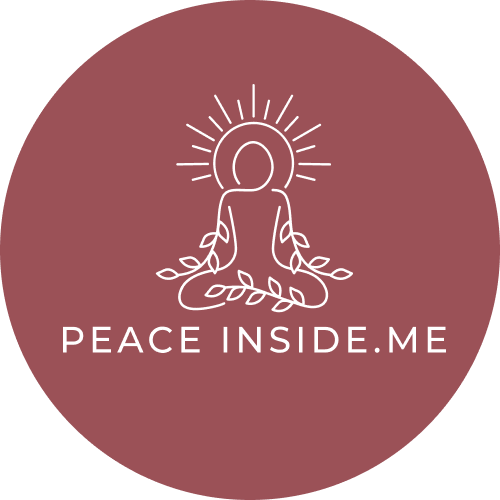peaceinside.me
Energy Healing 101
Please note, this post is partially or fully sponsored and may contain affiliate links.
Energy healing is the art and science of working with the body’s subtle energy systems to restore balance, release blocks, and awaken our natural capacity to heal. It reaches beyond physical symptoms to touch the emotional, mental, and spiritual layers of our being.
If you're just beginning your journey into energy medicine or looking to explore new methods, here’s a powerful introduction to what energy healing is, what you should know, and 8 of the most transformative practices available today.
What Is Energy Healing?
At its core, energy healing is based on a simple but profound idea: that the human body is not just matter, but also energy. When this life force flows freely, we experience vitality, clarity, and balance. But when it's blocked or stagnant — whether by trauma, stress, or emotional residue — dis-ease can manifest.
Energy healers use various techniques to channel healing energy through our body, helping to remove blocks, stimulate healing, and realign the body’s natural rhythm. It's a deeply intuitive practice that reconnects us to something ancient — a current of wisdom that lives within.
If you're just beginning your journey into energy medicine or looking to explore new methods, here’s a powerful introduction to what energy healing is, what you should know, and 8 of the most transformative practices available today.
What Is Energy Healing?
At its core, energy healing is based on a simple but profound idea: that the human body is not just matter, but also energy. When this life force flows freely, we experience vitality, clarity, and balance. But when it's blocked or stagnant — whether by trauma, stress, or emotional residue — dis-ease can manifest.
Energy healers use various techniques to channel healing energy through our body, helping to remove blocks, stimulate healing, and realign the body’s natural rhythm. It's a deeply intuitive practice that reconnects us to something ancient — a current of wisdom that lives within.

What You Should Know About Energy Healing
If you're new to this space, here are five essential truths that help ground your understanding:
1. Energy healing is ancient — and ever-evolving.
While some techniques, like Kundalini Activation, have only recently entered mainstream awareness, energy medicine has been practiced for over 5,000 years in cultures around the world. From Ayurvedic practices in India to the meridian system in Traditional Chinese Medicine, the belief in life force energy is as old as human spirituality itself. Reiki, for example, is an energy healing practice that existed 2500 years ago. It was forgotten for a while but was rediscovered in the 1920s.
2. It’s grounded in science, not just spirit.
Everything in the universe — including your body — is made up of vibrating particles. Modern physics and neuroscience are now validating what mystics have long known: energy is real, and it responds to intention, frequency, and awareness. Energy healing helps shift low-frequency vibrations (like fear or grief) into higher ones (like joy, love, or peace).
3. There is an energy healing method for everyone.
You don’t need to consider yourself “spiritual” to benefit. Some techniques are meditative and hands-on, while others are clinical and research-backed. You can receive energy healing in-person or remotely, passively or actively. The only requirement is curiosity and an open mind.
4. Energy healing is widely accessible.
From local studios to virtual sessions, certified energy healers can be found worldwide. Many practices like Kundalini Activation, Thetahealing and Chakra Balancing are now offered online or even self-guided — bringing this powerful work into your daily life.
5. It’s complementary — not a replacement.
Energy healing works beautifully alongside traditional medicine and therapy. It doesn’t replace diagnosis or treatment, but rather, it helps the body do what it’s built to do: self-heal. Think of it as tending the soil so healing can take root.
If you're new to this space, here are five essential truths that help ground your understanding:
1. Energy healing is ancient — and ever-evolving.
While some techniques, like Kundalini Activation, have only recently entered mainstream awareness, energy medicine has been practiced for over 5,000 years in cultures around the world. From Ayurvedic practices in India to the meridian system in Traditional Chinese Medicine, the belief in life force energy is as old as human spirituality itself. Reiki, for example, is an energy healing practice that existed 2500 years ago. It was forgotten for a while but was rediscovered in the 1920s.
2. It’s grounded in science, not just spirit.
Everything in the universe — including your body — is made up of vibrating particles. Modern physics and neuroscience are now validating what mystics have long known: energy is real, and it responds to intention, frequency, and awareness. Energy healing helps shift low-frequency vibrations (like fear or grief) into higher ones (like joy, love, or peace).
3. There is an energy healing method for everyone.
You don’t need to consider yourself “spiritual” to benefit. Some techniques are meditative and hands-on, while others are clinical and research-backed. You can receive energy healing in-person or remotely, passively or actively. The only requirement is curiosity and an open mind.
4. Energy healing is widely accessible.
From local studios to virtual sessions, certified energy healers can be found worldwide. Many practices like Kundalini Activation, Thetahealing and Chakra Balancing are now offered online or even self-guided — bringing this powerful work into your daily life.
5. It’s complementary — not a replacement.
Energy healing works beautifully alongside traditional medicine and therapy. It doesn’t replace diagnosis or treatment, but rather, it helps the body do what it’s built to do: self-heal. Think of it as tending the soil so healing can take root.

8 Most Efficient Energy Healing Modalities
Energy healing practices can generally be grouped into three categories: hands-on, no-touch, and self-directed. Here are eight of the most effective and accessible methods to explore — including one that works with your body’s own dormant power:
1. Kundalini Activation
Kundalini Activation is a rapidly growing modality that works with the body's own intelligent life force energy — known as Kundalini. This coiled energy, located at the base of the spine, holds immense potential for healing, insight, and awakening. When activated, it begins to rise through the body, clearing energetic blocks, balancing chakras, and often catalyzing emotional release or expanded awareness.
Unlike traditional Kundalini yoga, this practice requires no postures or breathwork. In a session, you lie down, relax, and let the energy do the work. Guided by a trained facilitator, the activation is transmitted through sound, presence, and subtle energetic resonance. The process is deeply intuitive — no effort, no performance, just surrender.
Many people experience deep emotional release, spontaneous movements, visions, or a profound sense of coming home to themselves. Others report feeling more grounded, joyful, and creatively alive in the days and weeks after a session. It’s a somatic and spiritual awakening rolled into one — and one that grows stronger over time.
We created this guided Kundalini Awakening meditation music to give you a taste of this profound energy — and to support your own exploration of what lives within you.
Energy healing practices can generally be grouped into three categories: hands-on, no-touch, and self-directed. Here are eight of the most effective and accessible methods to explore — including one that works with your body’s own dormant power:
1. Kundalini Activation
Kundalini Activation is a rapidly growing modality that works with the body's own intelligent life force energy — known as Kundalini. This coiled energy, located at the base of the spine, holds immense potential for healing, insight, and awakening. When activated, it begins to rise through the body, clearing energetic blocks, balancing chakras, and often catalyzing emotional release or expanded awareness.
Unlike traditional Kundalini yoga, this practice requires no postures or breathwork. In a session, you lie down, relax, and let the energy do the work. Guided by a trained facilitator, the activation is transmitted through sound, presence, and subtle energetic resonance. The process is deeply intuitive — no effort, no performance, just surrender.
Many people experience deep emotional release, spontaneous movements, visions, or a profound sense of coming home to themselves. Others report feeling more grounded, joyful, and creatively alive in the days and weeks after a session. It’s a somatic and spiritual awakening rolled into one — and one that grows stronger over time.
We created this guided Kundalini Awakening meditation music to give you a taste of this profound energy — and to support your own exploration of what lives within you.
2. Reiki
Reiki is one of the most popular hands-on energy healing techniques. It was developed in the early 20th century in Japan. During a Reiki session, the practitioner holds their hands over certain parts of the patient’s body and acts as a channel between the patient and the universal life force energy. Reiki is widely used to help people who suffer from chronic pain, digestive issues, Parkinson’s disease, cancer, stress, anxiety, depression, and other physical and emotional problems. But you don’t have to suffer from a specific problem to practice reiki. Reiki helps promote inner peace, relaxation, and overall well-being which is good for everyone.
3. Thetahealing
Thetahealing is a relatively new healing practice. It was developed in 1995 by Vianna Stibal. The main belief of thetahealing is that the person’s conscious and subconscious thoughts affect his mental and emotional health. Thetahealing can be used by people who suffer from asthma, bone pain, muscle damage, and other physical problems and diseases. It is also helpful for easing mental and emotional pain. Theta healing helps lower stress and anxiety, evokes a feeling of happiness, helps deal with fears, discloses creative potential, etc. During a thetahealing session, the healer sits in front of the patient asking questions and listening. Thetahealing can be conducted face-to-face and remotely.
4. Sound Therapy
Sound therapy is a no-touch energy healing practice. As the name implies, this modality uses sounds for healing. The practice of sound healing has been around for thousands of years and has been used to promote physical, emotional, and mental well-being. Sound therapy uses music and various instruments for energy healing. The soothing vibrations released during sound therapy sessions reduce stress and anxiety, lower blood pressure, improve sleep, etc.
Reiki is one of the most popular hands-on energy healing techniques. It was developed in the early 20th century in Japan. During a Reiki session, the practitioner holds their hands over certain parts of the patient’s body and acts as a channel between the patient and the universal life force energy. Reiki is widely used to help people who suffer from chronic pain, digestive issues, Parkinson’s disease, cancer, stress, anxiety, depression, and other physical and emotional problems. But you don’t have to suffer from a specific problem to practice reiki. Reiki helps promote inner peace, relaxation, and overall well-being which is good for everyone.
3. Thetahealing
Thetahealing is a relatively new healing practice. It was developed in 1995 by Vianna Stibal. The main belief of thetahealing is that the person’s conscious and subconscious thoughts affect his mental and emotional health. Thetahealing can be used by people who suffer from asthma, bone pain, muscle damage, and other physical problems and diseases. It is also helpful for easing mental and emotional pain. Theta healing helps lower stress and anxiety, evokes a feeling of happiness, helps deal with fears, discloses creative potential, etc. During a thetahealing session, the healer sits in front of the patient asking questions and listening. Thetahealing can be conducted face-to-face and remotely.
4. Sound Therapy
Sound therapy is a no-touch energy healing practice. As the name implies, this modality uses sounds for healing. The practice of sound healing has been around for thousands of years and has been used to promote physical, emotional, and mental well-being. Sound therapy uses music and various instruments for energy healing. The soothing vibrations released during sound therapy sessions reduce stress and anxiety, lower blood pressure, improve sleep, etc.

5. Pranic Healing
Pranic healing is a no-touch healing modality aimed at helping the body heal itself. It was developed in China in the 6th century AD and gained popularity in the late 20th century. Pranic healers believe that the human body has the innate power of self-healing. During a pranic healing practice, the practitioner does circular hand movements and uses prana (life force) to promote self-healing and speed it up. The healer cleanses the person’s energy field, triggering faster self-healing. Pranic healing is efficient in treating various physical and mental problems.
5. Acupuncture
Acupuncture is another popular hands-on energy healing modality. This is a key component of traditional Chinese medicine which involves inserting very thin needles into very specific body points. This healing modality helps improve the flow of energy. It is conducted to relieve physical discomfort, including back pain, neck pain, and headaches. While pain treatment is the main reason why most people turn to acupuncture, it is now also used for promoting overall well-being, including emotional health.
6. Healing Touch
This is an energy healing modality that uses gentle hand movements to promote self-healing. Unlike pranic healing, this is a hands-on healing technique. Healing touch helps with physical pain, including headaches, post-surgery pain, pain from burns and muscle damage, etc. Healing touch is non-invasive and can be used alongside traditional healing methods. Aside from helping a patient feel better physically, this practice also promotes psychological well-being.
Pranic healing is a no-touch healing modality aimed at helping the body heal itself. It was developed in China in the 6th century AD and gained popularity in the late 20th century. Pranic healers believe that the human body has the innate power of self-healing. During a pranic healing practice, the practitioner does circular hand movements and uses prana (life force) to promote self-healing and speed it up. The healer cleanses the person’s energy field, triggering faster self-healing. Pranic healing is efficient in treating various physical and mental problems.
5. Acupuncture
Acupuncture is another popular hands-on energy healing modality. This is a key component of traditional Chinese medicine which involves inserting very thin needles into very specific body points. This healing modality helps improve the flow of energy. It is conducted to relieve physical discomfort, including back pain, neck pain, and headaches. While pain treatment is the main reason why most people turn to acupuncture, it is now also used for promoting overall well-being, including emotional health.
6. Healing Touch
This is an energy healing modality that uses gentle hand movements to promote self-healing. Unlike pranic healing, this is a hands-on healing technique. Healing touch helps with physical pain, including headaches, post-surgery pain, pain from burns and muscle damage, etc. Healing touch is non-invasive and can be used alongside traditional healing methods. Aside from helping a patient feel better physically, this practice also promotes psychological well-being.

7. Emotional Freedom Technique
This is a self-administered energy healing modality that helps people manage stress and cope with negative thoughts. This healing method includes tapping acupuncture points while focusing on negative thoughts and repeating positive affirmations to combat them. EMT helps relieve stress, manage emotions and intrusive thoughts, as well as manage physical pain and improve sleep.
This is a self-administered energy healing modality that helps people manage stress and cope with negative thoughts. This healing method includes tapping acupuncture points while focusing on negative thoughts and repeating positive affirmations to combat them. EMT helps relieve stress, manage emotions and intrusive thoughts, as well as manage physical pain and improve sleep.
Final Thoughts
Energy healing is not just about fixing what’s broken — it’s about remembering what’s whole. Whether you choose the gentle touch of Reiki, the ancient rhythms of sound, or the awakening surge of Kundalini Activation, these modalities offer more than relief — they offer reconnection. Reconnection to your body’s wisdom. Reconnection to your intuition. Reconnection to something greater.
The beauty of energy work is that it meets you where you are. You don’t need to believe in it for it to work — just be open. Because deep down, you already carry the codes to your own healing. These tools simply help unlock them.
Energy healing is not just about fixing what’s broken — it’s about remembering what’s whole. Whether you choose the gentle touch of Reiki, the ancient rhythms of sound, or the awakening surge of Kundalini Activation, these modalities offer more than relief — they offer reconnection. Reconnection to your body’s wisdom. Reconnection to your intuition. Reconnection to something greater.
The beauty of energy work is that it meets you where you are. You don’t need to believe in it for it to work — just be open. Because deep down, you already carry the codes to your own healing. These tools simply help unlock them.
~
See a typo or inaccuracy? Let us know so we can fix it!
Sharing is caring ❤️
~
~
~
BECOME A PEACE INSIDER
Sign up for peaceinside.me information, inspiration, and specials.



